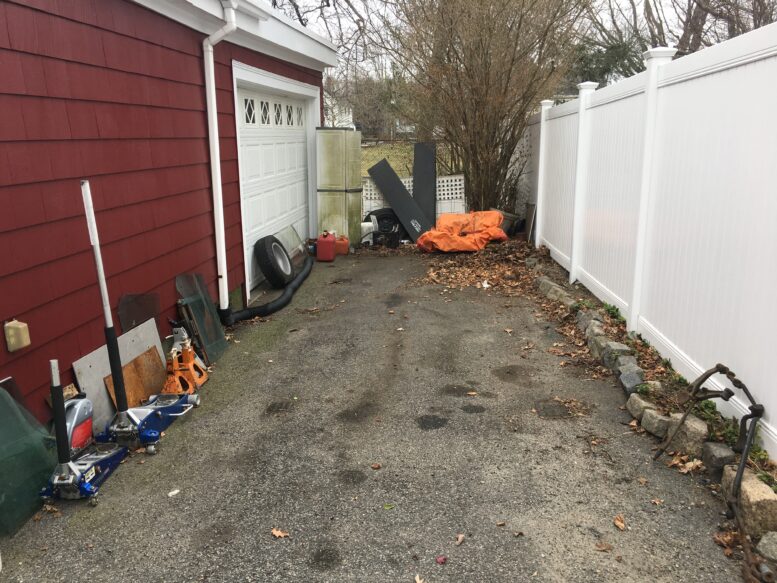Last week I wrote about entertaining the possibility of selling my Z3 M Coupe. Things are currently stalled, as none of the posters on Craigslist or Facebook Marketplace who advertise in-driveway bodywork and paint have responded to my inquiries about refinishing the road-rashed front bumper cover. Maybe my question about paint-matching was more than they wanted to wade into. (And maybe, of course, that’s for the best.)
So we’re back to mundane stuff. A few weeks ago, I wrote about some low-hanging fruit repairs—things with clear goals and a clear finish line that I expected to be in and out of quickly with a sense of accomplishment on completion. This week, I continued along that tack, with mixed results.
One thing on that punch list was the air conditioning in my ’79 Euro 635CSi that died on me while I was at the Vintage in 2021. Shortly after I got back, I discovered that the cause turned out to be a compressor fitting that loosened up, but by that time, it was fall in New England. The car wound up going into storage, where it largely sat until I brought it home a few weeks ago. I pressure-tested the a/c system with nitrogen to check for leaks, as I always do before charging. It held steady for several hours, but overnight the pressure dropped enough to make me suspicious. I coated every surface that I could reach with Big Blu bubble solution, but could not find any clustering of bubbles indicating a leak.
Before I did anything else, I decided to right a wrong. Well, not exactly a wrong—more like an impatient choice. Every a/c system has service ports to which you can connect a manifold gauge set for diagnosis and charging. The old-style ports on R12 (Freon) systems are threaded and look like fat Schrader tire valves. The new-style ports that all post-1992 R134a systems have cylindrical snap-on connectors with a ridge. But when you update an a/c system with a compact Sanden rotary-style compressor or one of its Chinese-made clones, you can order a compressor with Schrader service ports on the back (there’s not enough real estate there for R134a-style ports). If you rely on them as the system’s only service ports, it means that you don’t need to splice fittings with service ports on them into the rubber hoses. On the one hand, that’s a plus, both in terms of not introducing additional crimped fittings that can leak, as well as making a cleaner less-cluttered engine compartment. On the other hand, since the compressor is down low in the engine compartment, these ports are a pain to reach. Plus, the thread-on-style ports spit a lot of refrigerant when you unthread the hoses from them, whereas the snap-on-style R134a ports don’t leak a drop.

The R12-style charging ports on the back of the compressor are easy to photograph with a small thin iPhone but challenging to thread hoses onto, particularly under a hot intake manifold.
My logic used to be that if I was doing an update or a from-scratch installation (as was the case on the 635CSi), I was building a leak-free system, so I only needed to access the service ports once, so if I needed to jack up the car and set it up on stands to thread the hoses on, it wasn’t a big deal. This was the choice I made with the 635. However, now that I was accessing the ports on the 635 for the third time, I elected to splice R134a-style ports into the hoses. I already had a set on the shelf in the basement, so verified that I could reach the new fittings from under the hood without removing the air filter and the air flow meter, took the hour to cut the hoses and work with the crimping tool, and it was done.
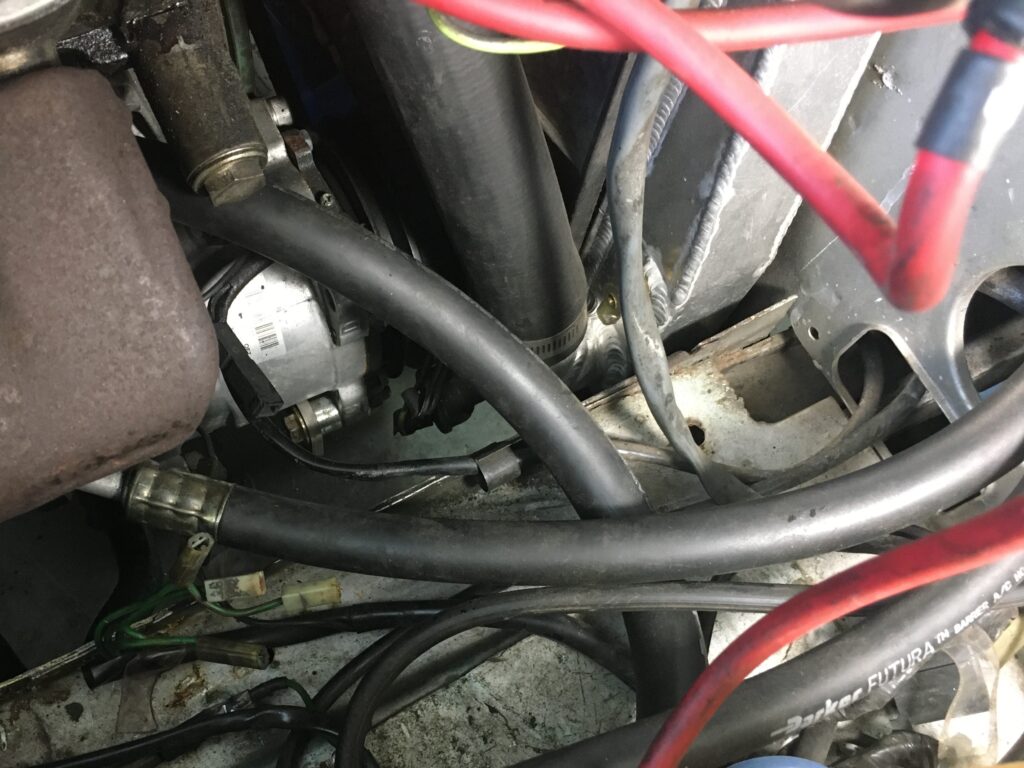
Before…
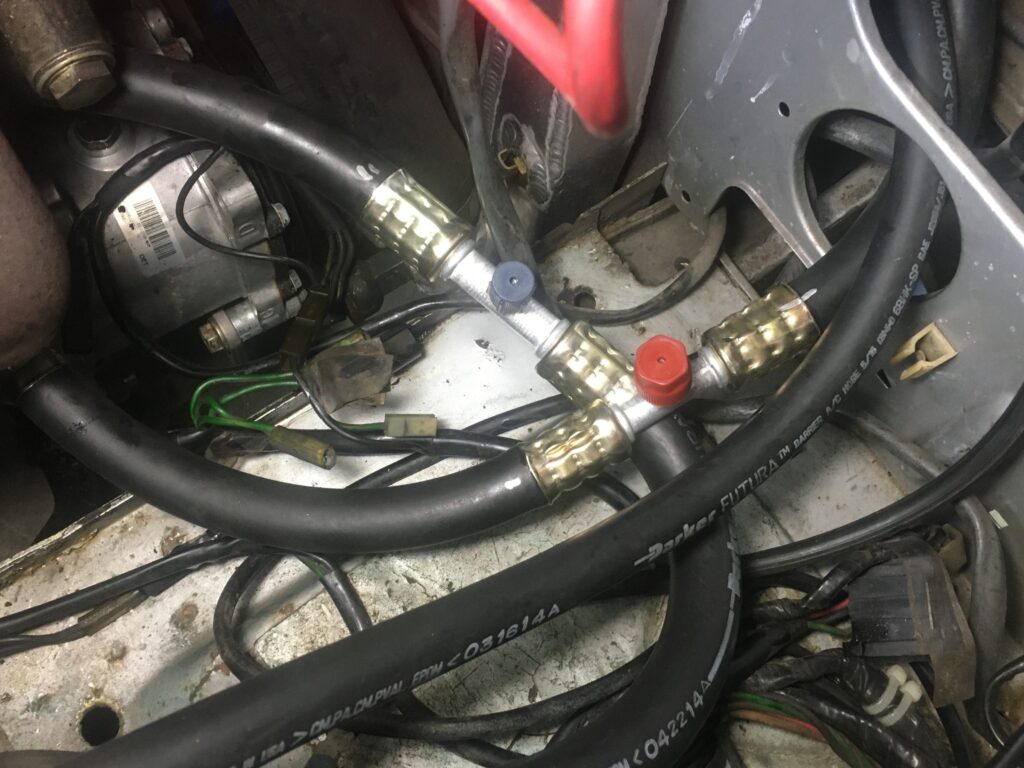
…and after.
This made it easier to re-pressurize the system, but unfortunately, it still looses pressure overnight. I’m going to need to buy some R134a, shoot it in, and try to sniff out the leak with my ancient but reliable Yokagawa detector.
The second leftover went down a bit easier. It’s the final chapter in the saga of The Numbers-Matching Boat Anchor—the original engine to my 1973 3.0CSi. As you may recall, I removed the tired engine from the car in 1990, stuffed it in the garage of my mother’s house in Brighton where my wife and I were living, and there it remained until a few months ago when I finally moved it out as part of preparation to sell the house. Surprisingly, despite a complete lack of care on my part (forget “pickling”—it didn’t even have the valve cover on it), the engine rotated freely, so I felt honor-bound to bring it back to my house in Newton. After my son helped me get it on a furniture dolly, I winched into a U-Haul trailer, drove it here to Newton, rolled it out of the trailer and down the driveway, strapped a tarp over it, and called it good enough. I then hid the evidence behind the RV.
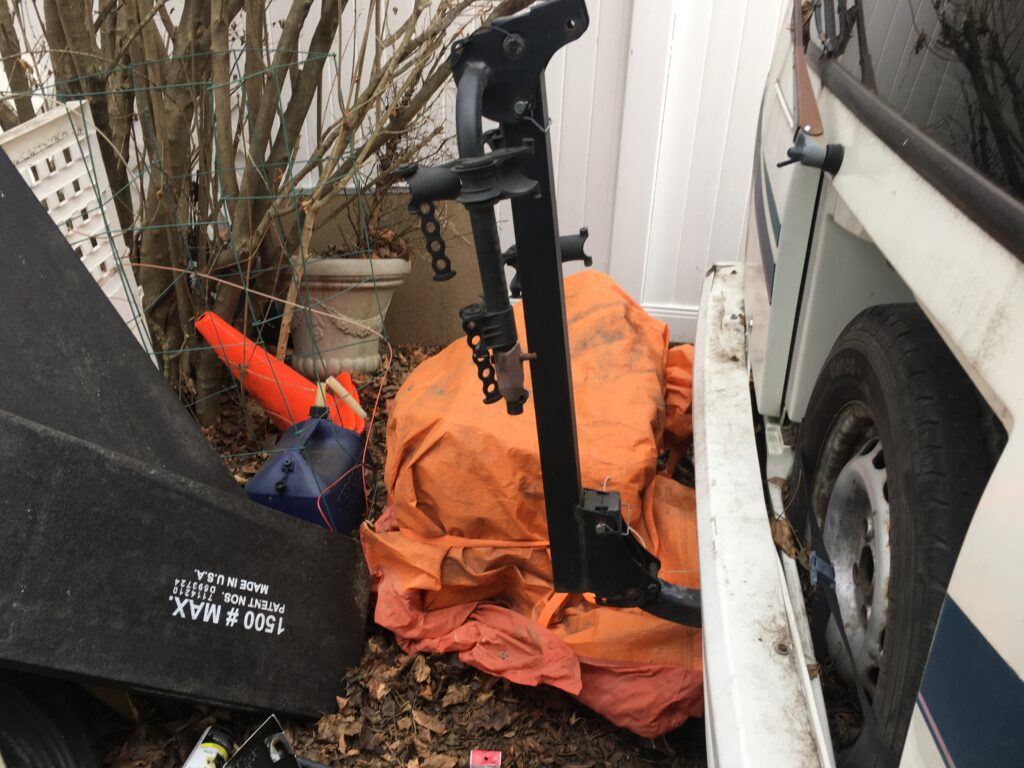
I felt like I had dumped a body at the end of the driveway.
Except that, a few months later while cleaning out the basement of my mother’s house, I found the engine’s AWOL valve cover. Just as I felt honor-bound to bring the engine home, I interpreted this as The Automotive Powers That Be telling me to treat it a bit more respectfully and seal it up.
There was a nice bit of synergy with another automotive event—it’s now summer, so it was time to re-register the little Winnebago Rialta RV and move it from its hibernation spot at the end of the driveway. So with the shame of the engine once again exposed, I took the 20 minutes required to unwrap it, unstrap it, put the valve cover on, seal up the ports on the top side with Gorilla tape, and cover it up again.
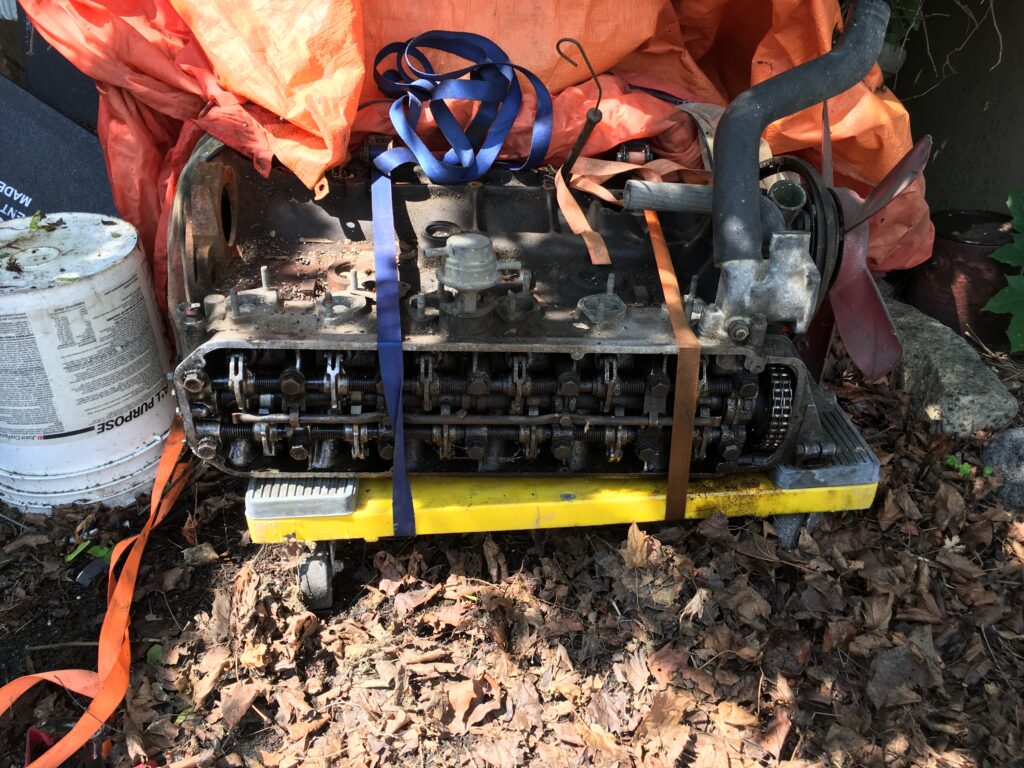
This exposed engine was making noise in my dreams like Poe’s Tell-Tale Heart.
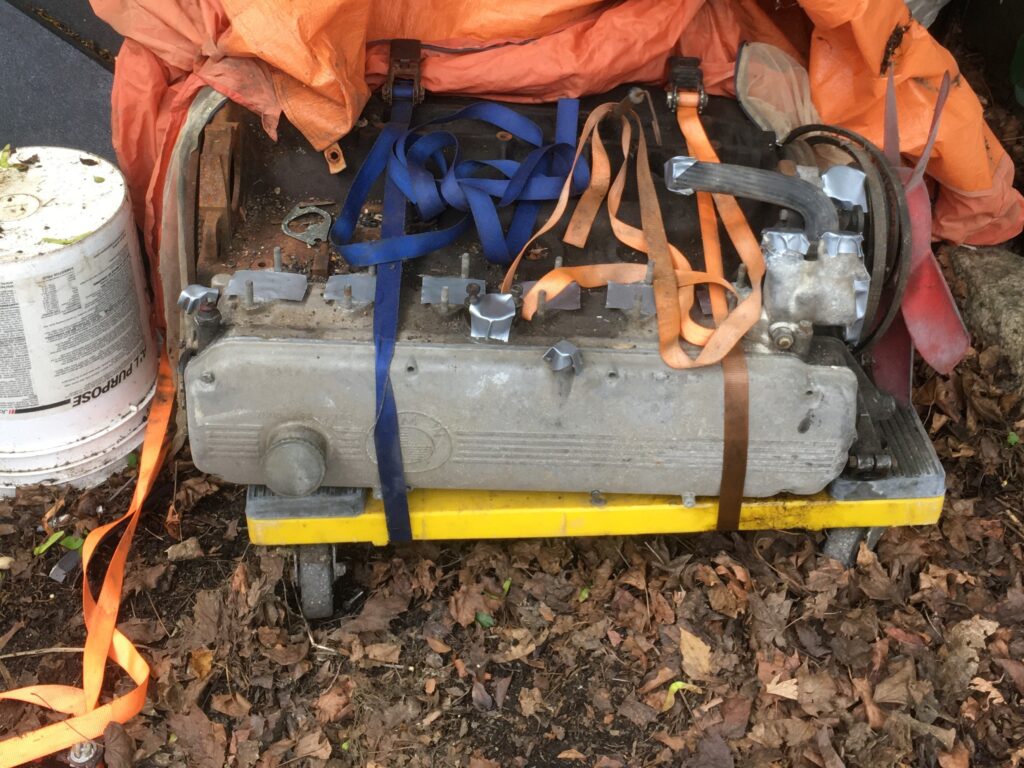
This bound-and-gagged version should stay quiet.
Hopefully next week I can deal with the unfinished business of the low brake fluid in Louie, my ’72 tii that’s in the warehouse in Monson. My plan was to first fully repair the a/c in the 635 and then swap the cars, but I may leave that as to-be-done-later as well. Having both the 635 and the M Coupe here at the house means that all three 2002s are are in storage 70 miles away, and that just doesn’t feel right. I love the big shark, but it’s just not a stress-busting car that turns mundane errands into an event the way the 2002s do.
Besides, if I have all this unfinished business, no one can accuse me of running an actual business.
—Rob Siegel
____________________________________
Rob’s newest book, The Best of The Hack Mechanic, is available here on Amazon, as are his seven other books. Signed copies can be ordered directly from Rob here.

